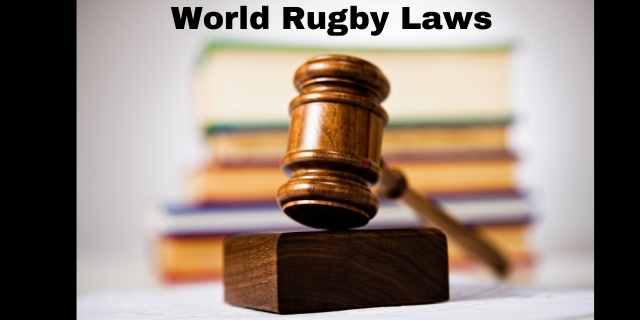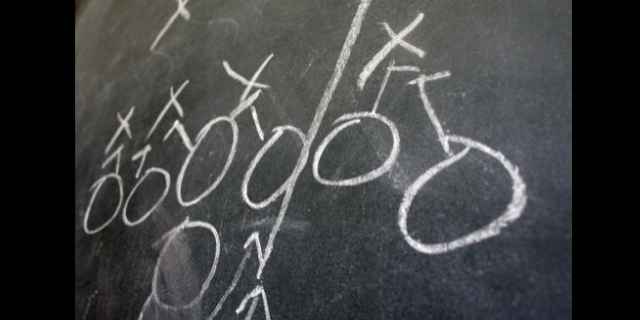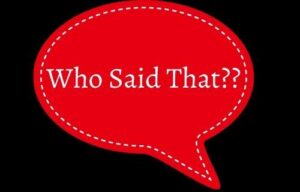The advantage rule in rugby allows referees to let play continue when there is a knock on or penalty infringement.
You may hear commentators grumble about how long an advantage lasts, or that the referee ended the advantage period too quickly.
So, what are the rules surrounding advantage in rugby? And how long should it last? This article dives into the main questions.
What Is the Advantage Rule In Rugby?

The advantage rule in rugby is for continuous game flow. When a penalty infringement or knock-on occurs, the referee could stop play.
Instead, referees tend to allow play to continue until the non-offending team gains territory or a try-scoring chance. If no advantage is gained, play is called back.
Referees signal advantage by waving an arm forward and calling “advantage!”.
As play continues, they may keep an arm raised to show the players and supporters that the team is still playing under the advantage rule.
When referees decide that the non-offending team has gained enough territory or a chance to score, they will call “advantage over”.
What does “advantage over” mean?
When referees call “advantage over”, this means that the original infringement has been canceled.
If the non-offending team loses possession of the ball, they are now under the normal rules of play. The referee will not bring the play back to the place of infringement and give them the penalty or scrum.
Play called back
What do commentators mean when they refer to play being called back?
This happens when a referee has called a penalty or knock-on advantage but the non-offending team either:
- lose possession
- lose territory by being shunted back or tackled behind the infringement point
- commit their own infringement
- kick the ball away without getting an advantage (only applies to penalty advantage)
Referees will now blow the whistle to stop play. They run back to the spot where the original infringement occurred and award the penalty or scrum.
Sometimes, they’ll consult with the assistant referees or the TMO to confirm the correct spot.
Kicking the ball away
One of my favorite pieces of rugby commentary is Brian Moore losing his mind over England tactics of kicking the ball away instead of holding on to it.
You can watch it on our YouTube channel.
This hasn’t got anything to do with the advantage rule. I just laugh when I’m reminded of it.
So, back to the advantage rule! Let’s say that a player kicks the ball under advantage and it’s caught by the fullback under no pressure.
Or worse, the ball goes straight into the touch. If the kicker was beyond the 22, this would be a major disadvantage under normal play (the opposition gets the lineout back where the ball was kicked).
If the advantage was due to a penalty infringement, the referee usually stops play and gives a penalty at the point of the initial foul.
If this is a knock-on advantage, you’ll usually hear the referee yell “advantage over” the moment that the ball is kicked. Tough luck if the opposition gleefully runs the ball back to score a try.
Let’s look more at the differences between a penalty and knock-on advantage.
Penalty Advantage Versus Knock On Advantage
The referee can call advantage for a penalty infringement or for a knock-on. (If you’re not sure what we’re referring to, we have an article that explains what knock-ons are in rugby).
In general, referees are far more generous to the non-offending team for penalty advantage.
I’ve already mentioned that the team will generally get the ball back if they kick it away to no benefit. That’s not the case for a knock-on advantage.
The other major difference is the amount of time or phases that referees allow play to go on under advantage.
A knock-on advantage is over after the non-offending team goes through a few phases. If they haven’t actually been knocked backward, the referee will yell that advantage is over.
In contrast, penalty advantages can last forever. Well, that’s a bit of exaggeration. Let’s take a look at this question specifically.
How Long Does Penalty Advantage Last In Rugby?

There is no mention in the rugby law books about how long the advantage lasts. It is up to the discretion of the referee.
However, we can see a pattern across rugby matches with some degree of consistency amongst referees.
The laws say that the advantage “must be clear and real”. This means that the referee can keep the play going until this is attained.
What happens is that the closer the play is to the offending team’s try line, the longer the referee will let play continue.
A referee confirmed to me that they play longer advantages when a penalty infringement is within the 22 of the offending team.
So to answer the question, a penalty advantage can last indefinitely in rugby. In practical terms, this can be up to five minutes.
How Long Does Knock On Advantage Last In Rugby?
Knock-on advantage is a far shorter period than penalty advantage.
In practice, referees will allow a maximum of three or four phases before calling advantage over.
This rarely lasts longer than a minute.
Tactical Versus Territorial Advantage

The law books mention tactical and territorial advantage.
What’s the difference? Let’s look at both in turn.
What is territorial advantage?
It’s probably easier to understand territorial advantage. Here’s an example.
Let’s say that the team in possession is in their own 22 when the referee calls advantage. They play on in a flowing move which ends with a ruck inside the opposition 22.
They have gained a significant territorial advantage. The referee will call “advantage over”.
But what if the ball carrier makes a few yards and gets turned over? The referee will stop play, and call the teams back to where the infringement occurred.
The game will restart as a penalty or scrum.
But how much territory is deemed as enough to be “advantage over”? There are no strict rules about this. Like many aspects of rugby, it’s up to the referee to decide.
What is tactical advantage?
I’m not convinced that all referees take note of how the Rugby Union authorities define tactical advantage.
A referee described it to me with this example:
Let’s say that the non-offending team has bunched their forwards to the left of the ruck, where they are outnumbered by the defensive line.
But there are five speedy backs to the right of the ruck with only one unlucky defender in the wide-open space.
Under advantage, the out half slings the ball out to the inside center. It’s a three-on-one scenario for a certain try.
But the butter-handed center fumbles and drops the ball. Chance gone.
In this case, the team has squandered a tactical advantage. The referee shouldn’t reward their ineptitude by calling play back and giving them the penalty.
But I’ve seen plenty of referees who do exactly that.
How Do Rugby Teams Use The Advantage Rule?

Teams know that if they lose possession during a penalty advantage close to the opposition line, they’ll get the ball back and a penalty kick.
This leads to commentators saying that the attacking team has a “free play”.
In practice, the scrum half or out half often decides to try a low-percentage play. This is an attacking move that has a small chance of succeeding – but if it works, will be a definite try.
In American Football, it’s known as a “Hail Mary” play. Let’s look at the most common examples.
Cross-field kick to the far touchline
With this play, the out half (or scrum half) kicks the ball high and long to the far side of the pitch. This is also referred to by commentators as a “kick to nothing”.
The hope is that the winger will rush forward (from an onside position) and gleefully gather the ball to ground it over the line.
This can work because defenses tend to bunch up when the play is close to the line. Sometimes, the winger can run in unopposed if they can catch the ball.
If the opposition winger grabs the ball from the air, they also have an unopposed (but long) run to the try line on the other end of the pitch.
But they’ll be stopped in their tracks by the referee’s whistle to hand possession back to the non-offending team.
Grubber kick toward the try line
The scrum half or out half will kick the ball low along the ground through a gap in the defensive line. The aim is that the ball reaches the in-goal area.
One or more backs will race forward to fall on the ball over the line.
If the opposition fullback gets there first, then this has been a wasted play. But the non-offending team gets the ball back for a penalty kick.
Chip kick into the in-goal area
With this move, a player chips the ball over the defensive line and into the in-goal area. The player rushes forward to catch the ball in-flight and fall to the ground for the try.
This play has become far less common, perhaps because it was rarely successful.
Rugby Quiz!
Think you know your rugby?
Let's see if you can match the quote to the player or coach!
Here are seven quotes. How well will you do?
